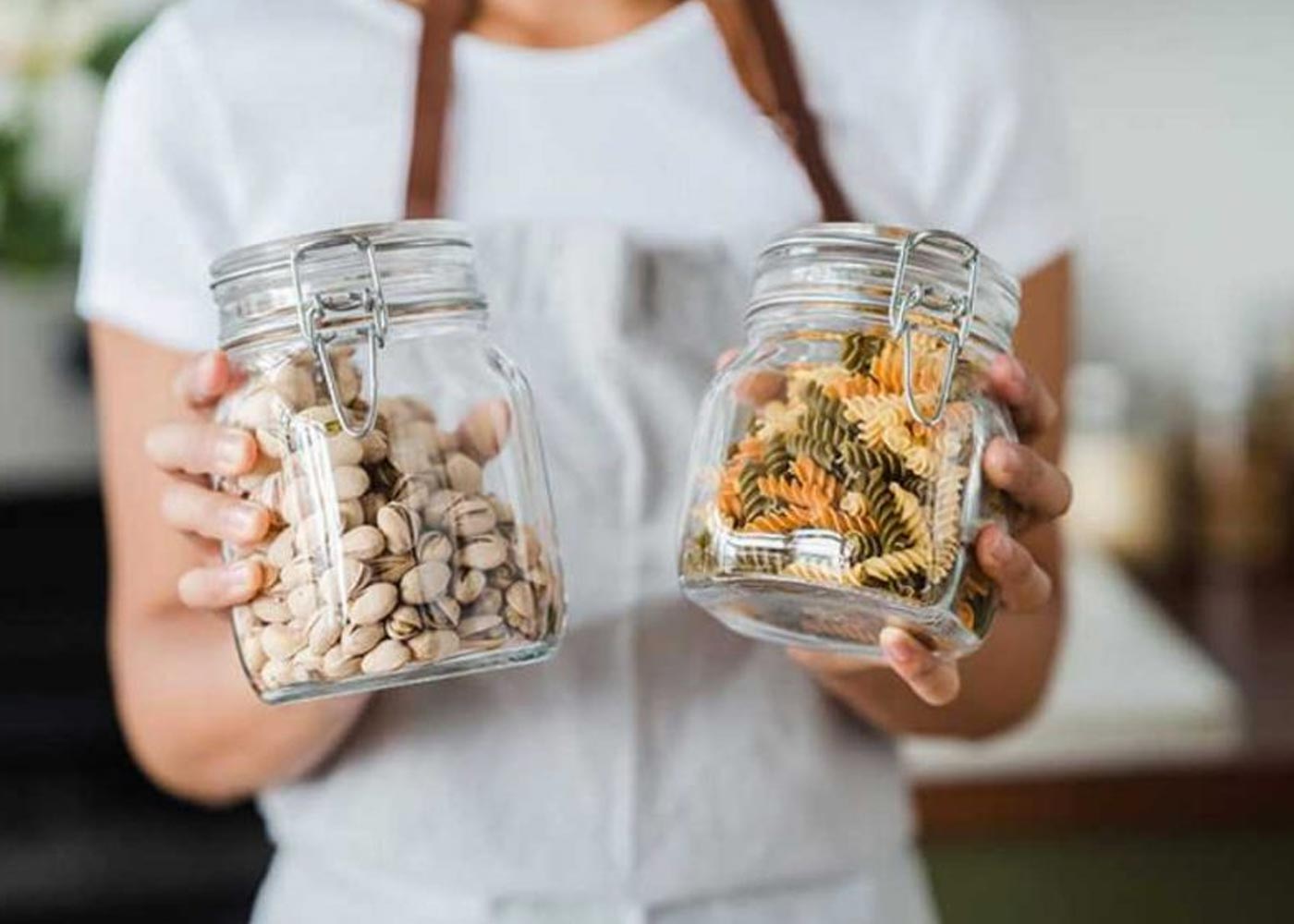Bottled and jarred packaged goods have become an integral
part of our daily lives. From beverages to personal care products, these
products offer convenience and ease of use. The history of bottled and jarred
packaging dates back to ancient times, with evidence of glass containers being
used in ancient Egypt. Today, packaging materials have evolved, with plastic
and metal being popular alternatives to glass. However, the environmental
impact of these packaging materials is a growing concern. This article will
explore the different types of bottled and jarred packaged goods, the
manufacturing processes and materials used, the marketing and distribution of
these products, their environmental impact, and the future of packaging
technology.
1. Introduction to Bottled and Jarred Packaged Goods
What are Bottled and Jarred Packaged Goods?
Bottled and jarred packaged goods refer to a wide range of
products that are packaged in bottles and jars, including food, beverages, and
personal care products. These products are commonly found on store shelves and
are the go-to choice for many consumers who prefer the convenience of
packaging.
History of Bottled and Jarred Packaging
Bottled and jarred packaging has been around for centuries,
dating back to the time of the ancient Egyptians and Romans who used glass
bottles to store perfumes, oils, and medicines. Over time, the packaging
industry has evolved to include different types of materials and manufacturing
processes, making it possible for us to enjoy a wide range of bottled and
jarred products today.
2. Types of Bottled and Jarred Packaged Goods
Beverages
Beverages are one of the most common types of bottled and
jarred products. From water and soda to wine and beer, beverages are packaged
in bottles and cans for easy consumption. Bottled water, in particular, has
become increasingly popular over the years, driven by concerns over the safety
and quality of tap water.
Food Products
Food products packaged in bottles and jars include sauces,
dressings, condiments, and even baby food. These products are often packaged in
glass or plastic containers and are sealed for freshness and easy storage.
Jarred products like jams, jellies, and pickles are also popular, especially
among home cooks who appreciate the convenience of pre-packaged ingredients.
Personal Care Products
Personal care products like shampoos, conditioners, lotions,
and body wash are often packaged in plastic bottles. These products are
designed to be easy to use and convenient for consumers who want to take care
of their personal hygiene at home or on the go.
3. Packaging Material for Bottled and Jarred Products
Glass
Glass is a popular material for bottled and jarred products
because of its durability, recyclability, and ability to preserve the flavor
and quality of the product inside. Glass bottles and jars are also easy to
clean and can be reused for other purposes.
Plastic
Plastic is another common material for bottled and jarred
products because of its versatility, light weight, and low cost. However,
plastic is not as durable as glass and can be harmful to the environment if not
properly disposed of.
Metal
Metal packaging, like aluminum cans, is often used for
beverages because of its ability to keep the product fresh and carbonated.
Metal packaging is also recyclable, although it may not be as sustainable as
glass or plastic.
4. Manufacturing Processes for Bottled and Jarred Products
Glass Manufacturing Process
The glass manufacturing process involves heating a mixture
of raw materials to high temperatures until it melts and then pouring it into
molds to create the desired shape. The glass is then annealed, which means it
is slowly cooled to reduce any internal stresses and make it more durable.
Plastic Manufacturing Process
The plastic manufacturing process involves melting plastic
pellets and then injecting the material into molds to create the desired shape.
Once the plastic has cooled and hardened, it is removed from the mold and
finished with any necessary labeling or decoration.
Metal Manufacturing Process
The metal manufacturing process for cans involves the use of
large sheets of metal that are stamped and formed into the shape of a can. The
cans are then coated with a layer of plastic to prevent the metal from reacting
with the contents of the can. Finally, the cans are filled with the desired
product and sealed for freshness.
5. Marketing and Distribution of Bottled and Jarred Products
Product Labeling and Branding
One of the key elements of marketing bottled and jarred
goods is the product labeling and branding. A well-designed label can make a
product stand out on the shelves and attract customers. It is important for
companies to choose appealing packaging and label designs that accurately
convey the product's key benefits and differentiate it from competitors.
Distribution Channels
The distribution channels for bottled and jarred products
can vary widely depending on the type of product and the target market. Some
common distribution channels include grocery stores, specialty food stores,
online retailers, and direct-to-consumer sales. Companies need to identify the
most effective distribution channels for their specific products to reach their
target audience.
Consumer Trends and Preferences
Consumer trends play a crucial role in the marketing and
distribution of bottled and jarred products. For instance, increasing demand
for convenience and on-the-go products has led to the rise of single-serving
sizes. Similarly, consumers are more concerned about the quality and origin of
food products, leading to a growing demand for locally-sourced and organic
products.
6. Environmental Impact of Bottled and Jarred Packaging
Recycling and Waste Management
The growing use of bottled and jarred packaging has raised
concerns about the environmental impact of the packaging waste. Recycling and
waste management are crucial to minimize the environmental impact of packaged
goods. Governments and organizations are implementing initiatives to encourage
proper waste management and increase recycling rates.
Carbon Footprint
Bottled and jarred packaging also contributes to the carbon
footprint of the food industry. The production, transportation, and disposal of
packaging materials result in greenhouse gas emissions. Companies are taking
steps to reduce their carbon footprint by adopting sustainable practices such
as using renewable energy sources, reducing packaging materials, and optimizing
transportation routes.
Sustainable Alternatives to Traditional Packaging
As more consumers become environmentally conscious,
companies are exploring sustainable alternatives to traditional bottled and
jarred packaging. Biodegradable and compostable materials made from natural
materials like cornstarch and sugarcane are becoming increasingly popular.
Innovative packaging solutions like edible packaging are also being developed
as a sustainable alternative.
7. Future of Bottled and Jarred Packaged Goods
Advancements in Packaging Technology
Advancements in packaging technology are driving the future
of bottled and jarred packaged goods. Smart packaging that can monitor the
freshness and quality of products, as well as interact with consumers, is being
developed. The use of biodegradable and compostable materials is also likely to
increase in the coming years.
Consumer Demand for Sustainable Packaging
The growing emphasis on sustainability is driving a shift
towards more environmentally friendly packaging. As consumers become more aware
of the impact of packaging waste on the environment, they are demanding
sustainable packaging alternatives. Companies that incorporate sustainable
packaging practices into their operations are likely to remain competitive in
the future.
Regulatory Changes and Impacts on Packaging Industry
Regulatory changes are likely to have a significant impact
on the packaging industry. Many countries are implementing policies to
encourage sustainable packaging practices and reduce plastic waste. Companies
will need to adapt to new regulations and may face financial and reputational
risks if they fail to comply with environmental policies.In conclusion, bottled
and jarred packaged goods have revolutionized the way we consume and store
products. While there are some concerns regarding the environmental impact of
traditional packaging materials, advancements in technology and a growing demand
for sustainable packaging offer hope for a more eco-friendly future. As
consumers, we can make a difference by making informed choices and supporting
companies that prioritize sustainability.
FAQs
What types of products are typically bottled or jarred?
Bottled and jarred packaging is used for a wide range of
products, including beverages (water, soft drinks, juices, alcoholic drinks),
food products (jams, sauces, spreads), and personal care products (shampoos,
lotions, soaps).
What are the most common materials used for bottled and
jarred packaging?
The most common materials used for bottled and jarred
packaging are glass, plastic, and metal. Glass is a popular choice for its
durability and ability to preserve the taste and quality of the product.
Plastic is lightweight and convenient, while metal is often used for its
airtight properties.
What are the environmental concerns associated with bottled
and jarred packaging?
The production and disposal of bottled and jarred packaging
can have a significant environmental impact. Plastic packaging, in particular,
is a major contributor to marine pollution and is not biodegradable. Glass,
while recyclable, requires significant energy to produce, transport, and
recycle. Metal packaging can also have a high carbon footprint.
What can consumers do to minimize the environmental impact of
bottled and jarred packaging?
Consumers can make a difference by choosing products with
minimal packaging or packaging made from sustainable materials, such as
bioplastics or recycled materials. Recycling is also key to reducing the impact
of these products - glass, plastic, and metal packaging can all be recycled. By
making informed choices and supporting companies that prioritize
sustainability, consumers can contribute to a more eco-friendly future.
If you wish to contribute to our blog, please email us on morhadotsan@gmail.com.























